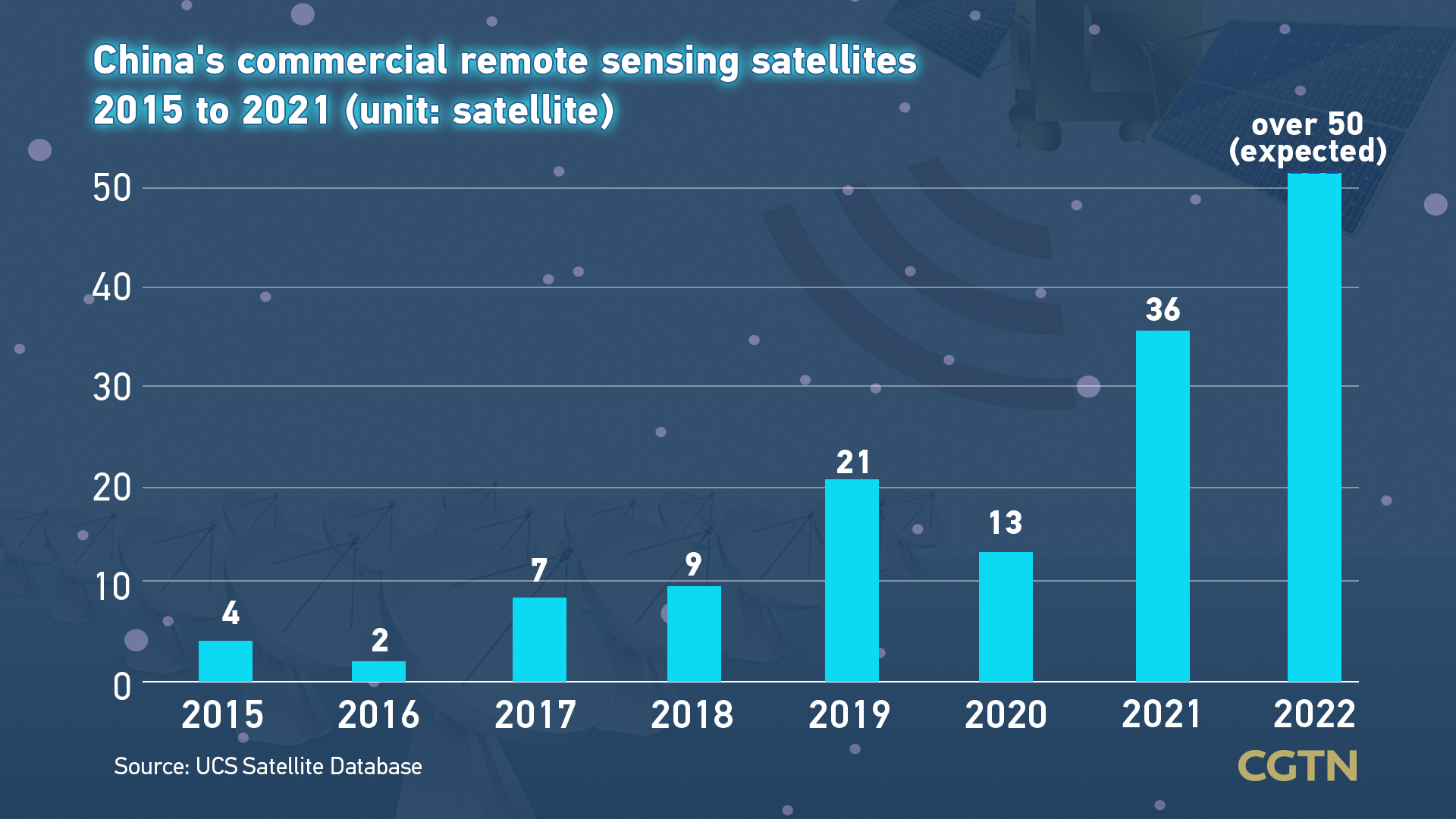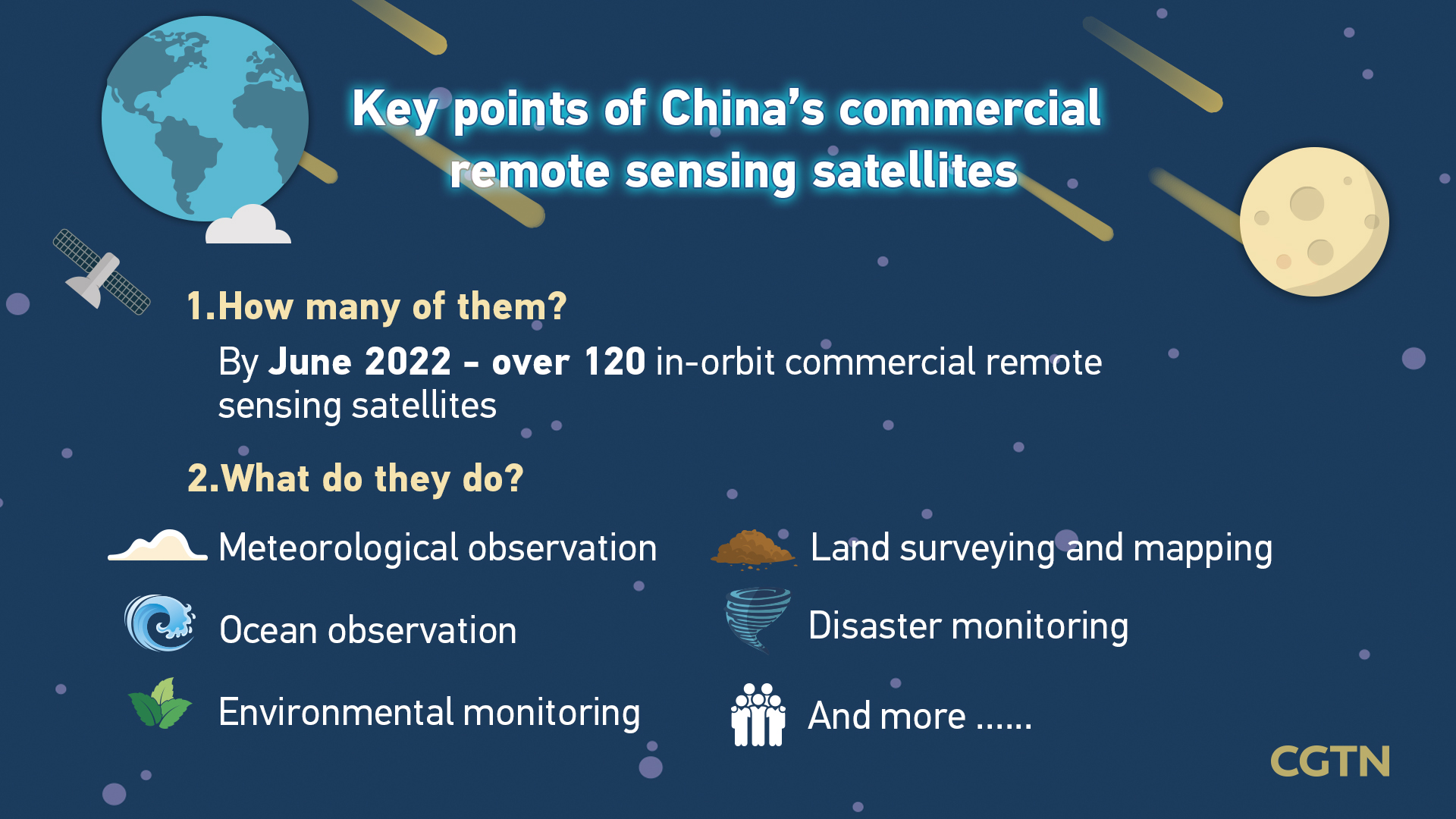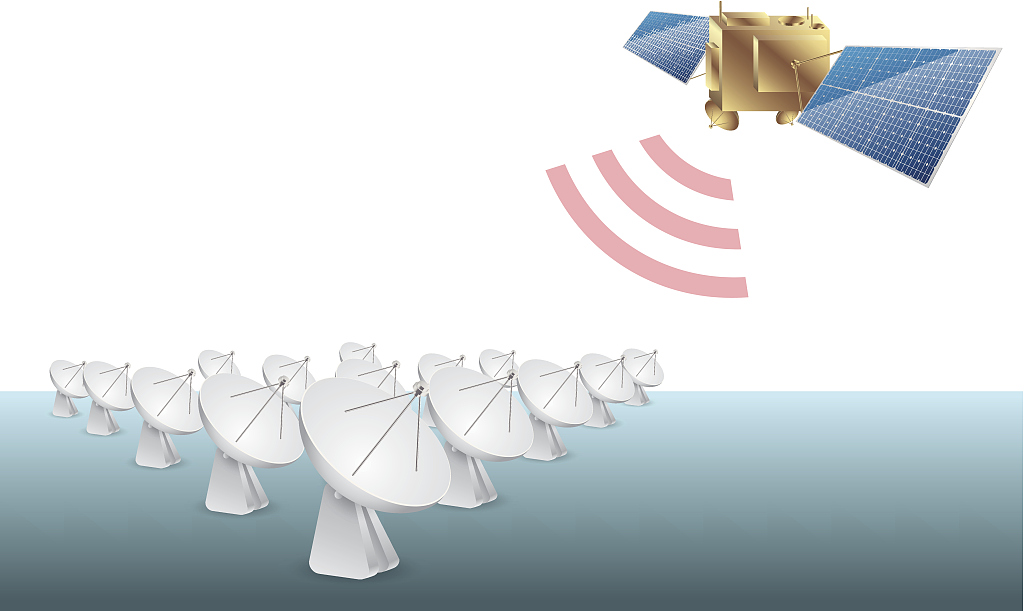
China started its commercial aerospace sector in 2015. /CFP
China started its commercial aerospace sector in 2015. /CFP
China started its commercial aerospace sector in 2015, when the country launched a 10-year plan to engage private players in the once national-operation only field.
Boosted by policy support, China's aerospace market has grown rapidly in the past seven years, with an annual growth rate of more than 20 percent, and it is expected to top 1.5 trillion yuan (about $222 billion) in 2022.
So far, four Chinese commercial rocket enterprises have carried out eight launch attempts, with two successfully putting rockets into orbit.
China is now the world's second largest commercial satellite owner after the U.S.

CGTN graphics by Yin Yating and Li Yueyun
CGTN graphics by Yin Yating and Li Yueyun
Launching more satellites
The thriving global market has driven up demand for low-cost carrier launches.
For private aerospace companies, however, it is difficult to develop carrier rocket technology because of their long development cycle and slow production growth capacity.
According to the UCS Satellite Database, from 2015 to 2018, China launched fewer than 10 commercial remote sensing satellites annually.
Therefore, the country introduced support policies to help commercial players in the field.
"The research and development of satellites and rockets, especially rockets, requires extensive scientific research infrastructure," Pan Aihua, chief engineer at the China National Space Administration, told CMG.
"China has made considerable investment in this sector over the years. We also encourage this sector to partially open to private enterprises and allow its research outcomes to be shared with the whole society."
Launches of commercial remote sensing satellites more than doubled from nine in 2018 to 21 in 2019 on new support policies. The number is expected to exceed 50 in 2022.
As of this June, China has more than 120 such satellites in orbit, with an ever-expanding field of applications, such as meteorological observation, land surveying and mapping and ocean observation.

CGTN graphics by Yin Yating
CGTN graphics by Yin Yating
Advanced commercial sector
On August 9, the country launched its commercial rocket CERES-1 Y3, the first private rocket model in China to achieve continuous and successful launch in orbit, from the Jiuquan Satellite Launch Center in northwestern China.
CERES-1 was developed by Beijing-based high-tech company Galactic Energy.
"Compared with traditional solid-propellant carrier rockets, the CERES-1 carrier rocket has 30 percent more payload capacity while cutting 30 percent of the cost," Liu Baiqi, research and development director for CERES-1, told CMG.
"We have achieved this cost efficiency through a number of technical innovations. For example, the stage-4 engine adopts a 3D printing solution, which not only makes the engine lighter, but also improves its performance."
In addition, the country also launched 16 new satellites, including the Jilin-1 Gaofen 03D09 and Yunyao-1 04-08 satellites, into orbit from Taiyuan Satellite Launch Center in north China's Shanxi Province on August 10.
These satellites are mainly used in fields such as commercial remote sensing and atmospheric imaging.

As of June 2022, China has more than 120 commercial remote sensing satellites in orbit. /CFP
As of June 2022, China has more than 120 commercial remote sensing satellites in orbit. /CFP
China's largest commercial satellite provider
Staff members of the Jilin-1 (named after northeast China's Jilin Province) commercial remote sensing satellite constellation, the largest of its kind in China, are putting the finishing touches on the latest batch of high-resolution observation satellites.
There are currently 54 fully operational Jilin-1 satellites in space.
Located in Changchun City, capital of Jilin Province, Chang Guang Satellite Technology Co., Ltd. (CGSTL) plans to launch the remaining 27 satellites in the second half of this year to meet market demands.
"Now more than 300 enterprises in China are using the Jilin-1 constellation to provide data services in more than a dozen fields such as agriculture, environmental protection, natural resources and urban planning and management," CGSTL Deputy General Manager Jia Hongguang told CMG.
"By the end of 2023, the number of Jilin-1 satellites will reach 140, and by the end of China's 14th Five-Year Plan period (2021-2025), there will be more than 300."

